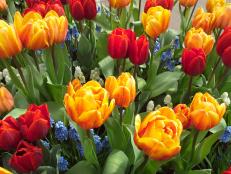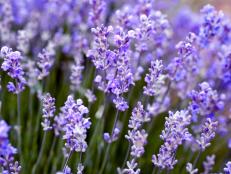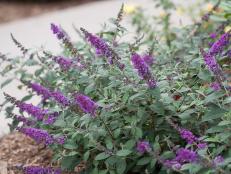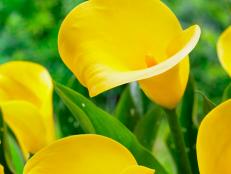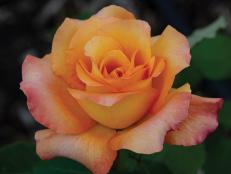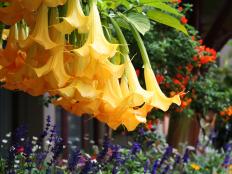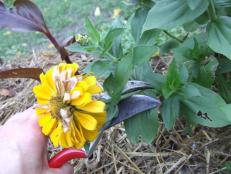How to Grow and Care for Rhododendron
Learn how to plant and care for rhododendron, the gorgeous cousin of azaleas.
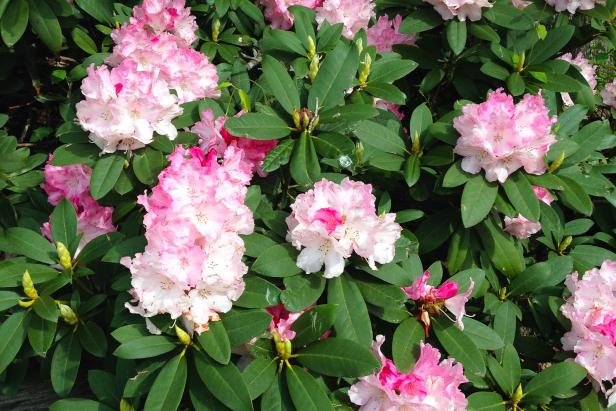
Debbie Wolfe
Rhododendron in full bloom.

Rhododendrons light up the spring landscape with showy, colorful blooms. They're some of the most gorgeous shrubs around, producing big branches covered in flowers in a wide range of colors.
Rhododendrons look beautiful planted in formal rows around a home's foundations or scattered across a yard to naturalize the landscape. Here's what you need to know about growing rhododendrons.
Rhododendrons vs. Azaleas
Rhododendrons are often confused with their cousins, azaleas. That's because the two look a lot alike and need similar growing conditions. Even though rhododendrons and azaleas are often lumped together, they are two different plants.
Rhododendrons and azaleas are in the same plant genus, Rhododendron, so if you buy an azalea shrub at a nursery, you'll see the word "Rhododendron" on the plant tag. And people tend to call deciduous rhododendrons "azaleas," adding to the confusion.
10 Varieties of Rhododendrons to Try in Your Yard (+ Growing Tips) 11 Photos
Looking for a low-maintenance evergreen shrub that loves the shade and bears large flowers? Then look no further than the hardy rhododendron.
Rhododendrons tend to be larger shrubs than azaleas, and they have larger blooms and leaves. Rhododendrons are more cold-hardy than azaleas and they're fussier, preferring climates that are neither too hot nor too cold. They grow best in the Pacific Northwest, the Northeast, the Upper South and Northern California. Azaleas thrive in the hotter, wetter conditions of the Deep South and Coastal South. For example, rhododendrons thrive in Portland and Seattle; azaleas thrive in New Orleans and Tallahassee.
Rhododendron 101
Rhododendrons are native to Asia, North America, Europe and Australia. There are more than 1,000 wild species and more than 14,000 hybrids. Rhododendrons grow in nearly every part of North America, from Canada to Alabama. There are two basic types, deciduous and evergreen. There are so many varieties of rhododendrons that there's a "rhody" for almost any landscape need. There are low-growing ground cover rhododendrons as well as plants that grow to 25 feet tall. They come in a range of flower colors including pink, purple, red, white and yellow.
Rhododendrons prefer climates with moderate rainfall and moist, temperate summers. They don't do well in hot climates because they need a certain amount of chilling to develop flower buds.
Botanical Name: Rhododendron spp.
Common Names: Rhododendron, azalea
Bloom Time: Spring (But there are some summer and fall-blooming varieties)
Hardiness Zones: 3 to 8
How to Plant Rhododendrons
Buy plants in 1- or 3-gallon pots from a nursery. They have shallow root systems, so you'll have better luck with a larger plant.
Plant in spring or early fall. If you plant them in the fall, they'll grow healthier roots out of the gate and be stronger and hardier.
Choose a spot that gets dappled shade. Avoid full sun or deep shade. Shrubs need six hours of sun daily. If you live in the warmer end of their growing zones, be sure you choose a site that gets afternoon shade.
Soil should be well-drained, moist, and acidic (pH 4.5 to 6). Rhododendrons don't do well in heavy soils that drain poorly. No clay.
Amend the soil. Add organic material like composted cow manure, chopped leaves or compost from your compost bin.
Space plants 2 to 6 feet apart, depending on their mature size. Dig a hole as deep as the root ball and twice as wide.
Set new plants so the top of their root balls are at soil level. Plant them deeper and the roots may rot. Don't plant deep enough, leaving the roots elevated above ground level where they'll dry out, and the rhody won't thrive.
Caring for Rhododendrons
Mulch plants in the spring. A couple of inches of pine bark or pine straw will protect rhododendrons' shallow root systems and retain moisture.
Pro Tip: Pine straw and pine bark acidify the soil as they decompose, so pine-based mulch builds soil that's ideal for acid-loving rhododendrons.
Fertilize them sparingly in the early spring, even if they are summer or fall bloomers.
Deadhead after they bloom. This will promote leaf and branch growth. Snip those spent blooms off carefully, though. Next year's flowers are just under those old flowerheads, on the old wood.
In areas with severe winters, put a heavy mulch on evergreen rhododendrons to keep their roots from freezing.
Don't prune them. Rhododendrons are prettier if you let them sprawl into their natural, rambling shape. If you need to trim them back to reduce their size, prune them immediately after they flower or you won't get blooms the following year.
Remove dead or diseased branches. You can do this at any time of the year.
Rhododendron Pests and Problems
Rhododendrons can be vulnerable to insects and other critters including:
- Vine weevil
- Whiteflies
- Leafhoppers
- Lace bugs
- Scale
- Caterpillars
- Aphids
They can be prone to plant diseases including:
- Powdery mildew
- Rust
- Leafy gall
- Petal blight
Recommended Rhododendron Varieties
'Blue Diamond' is a dwarf evergreen that grows to 5 feet tall and produces purple-blue flowers in the spring.
'Nova Zembla' is an evergreen that grows 5 to 10 feet tall and has red blooms in the spring.

Monrovia
'Nova Zembla' is a small, evergreen rhododendron that can become deep pink in sunny areas.
'Purple Gem' is a dwarf rhody that grows just 2 feet tall and blooms in early spring. It's a good choice to edge a border.
'Capistrano' is a compact, mounding rhody that grows 4 feet tall and wide and produces pale yellow flowers
'Hydon Dawn' is one of the few rhododendrons that tolerates full sun. It's a compact, mounding plant that gets 5 feet wide and tall and produces pale pink flowers.
'P.J.M.' features lavender-purple blooms. This variety, which grows 5 to 6 feet tall with a rounded form, is also favored for its dark green leaves. In winter, its foliage takes on a mahogany-brown tint.

Monrovia
Bright lavender-purple blooms and dark green leaves make 'P.J.M.' rhododendrons show-stoppers.
'Mandarin Lights' is a deciduous rhody with bright orange blooms that emerge in the spring before the leaves pop out. Grows to 5 feet tall.







